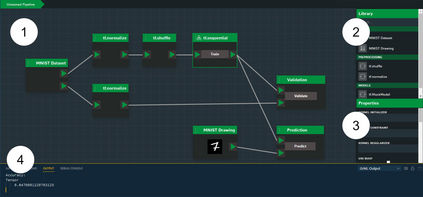Software development of modern, data-driven applications still relies on tools that use interaction paradigms that have remained mostly unchanged for decades. While rich forms of interactions exist as an alternative to textual command input, they find little adoption in professional software creation. In this work, we compare graphical programming using direct manipulation to the traditional, textual way of creating data-driven applications to determine the benefits and drawbacks of each. In a between-subjects user study (N=18), we compared developing a machine learning architecture with a graphical editor to traditional code-based development. While qualitative and quantitative measures show general benefits of graphical direct manipulation, the user's subjective perception does not always match this. Participants were aware of the possible benefits of such tools but were still biased in their perception. Our findings highlight that alternative software creation tools cannot just rely on good usability but must emphasize the demands of their specific target group, e.g. user control and flexibility, if they want long-term benefits and adoption.
翻译:暂无翻译






